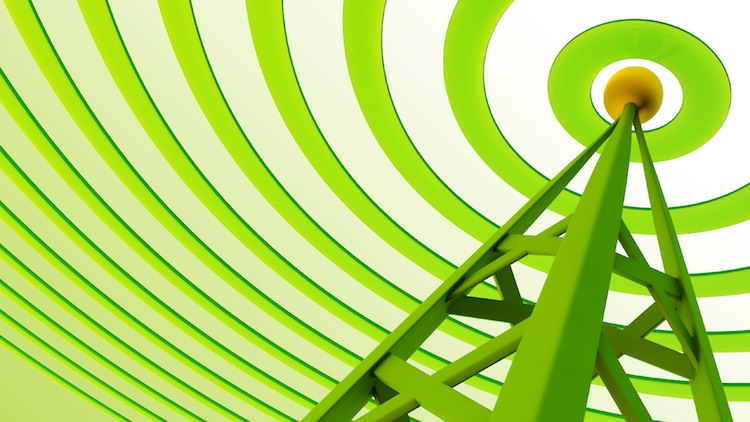NAB on TV White Spaces: No More Microsoft Hand-Outs for 'Failing Experiment'
NAB says Microsoft's suggestion of terrain-based interference test is 'disingenuous'

The National Association of Broadcasters took the gloves off in a recent meeting with FCC engineering staffers over TV white spaces (TVWS) -- the use of broadcast spectrum for unlicensed uses like wireless broadband -- calling it a failing experiment.
Microsoft has been pushing the FCC to allow unlicensed devices operating in the TV band to do so closer to existing TV channels, but NAB told the engineering staffers in a meeting last week that the computer company's proposal on how to determine if a channel is available for unlicensed use is disingenuous and in service of white spaces deployments whose success has been "grossly exaggerated."
The FCC voted last year on a Notice of Proposed Rulemaking freeing up more "white spaces" spectrum between TV channels for wireless broadband by allowing for taller towers and higher powers for mobile and fixed wireless so signals can reach farther and over more difficult terrain. But it sought further comment on changing the interference calculation as Microsoft had wanted.
Also Read: NAB, Microsoft Spar Over TVWS
While NAB and Microsoft struck a compromise on some updates to TVWS pushed by the latter, NAB has balked at changing how the FCC calculates sufficient interference protections, particularly if it means allowing use on the first channel adjacent to broadcasters, saying that Microsoft's proposal is too close for comfort and a recipe for interference just as broadcasters are trying to roll out the new ATSC 3.0 transmission standard that could make them a broadband player as well as delivering ultra high-definition pictures and interactive content.
Microsoft has been telling the FCC that it can use a "terrain-based" approach to determining if unlicensed use is going to interfere with a TV channel rather than the "current overly-conservative distance-based protection" approach.
But in the May 5 meeting, NAB execs said that Microsoft has failed to demonstrate that its proposal will not create potentially harmful interference, referencing a limited test with a professional grade receiver, limited testing NAB calls Microsoft's reliance on "disingenuous."
Broadcasting & Cable Newsletter
The smarter way to stay on top of broadcasting and cable industry. Sign up below
Microsoft's reference to the success of TV white spaces devices to date -- the computer company has billed TVWS as a route to closing the rural broadband divide -- as "grossly exaggerated," with backers of TVWS (it does not call out Microsoft by name in the FCC document describing the meeting)--referencing expanded deployments "that do not appear to exist."
Also Read: Pai Says Broadcasters Need to Accept TV Study Software
"There are just over 300 TVWS devices operating nationwide, more than a dozen years after the Commission authorized unlicensed operations in the television bands and despite multiple attempts to boost deployment of this technology. It is unclear how ongoing rulemakings dedicated to a failing experiment that has never achieved measurable success represent a sound use of Commission resources," NAB execs told the commission.
Pointing out its compromise with Microsoft on other TVWS issues, NAB signaled it was about done.
"It it is long past time for the Commission to stop tinkering with its rules to boost a technology that has no demonstrated track record of success," says NAB deputy general counsel Patrick McFadden in the ex parte document describing the meeting. "At some point, white spaces proponents should be asked to actually accomplish something before asking for further handouts."
Contributing editor John Eggerton has been an editor and/or writer on media regulation, legislation and policy for over four decades, including covering the FCC, FTC, Congress, the major media trade associations, and the federal courts. In addition to Multichannel News and Broadcasting + Cable, his work has appeared in Radio World, TV Technology, TV Fax, This Week in Consumer Electronics, Variety and the Encyclopedia Britannica.

